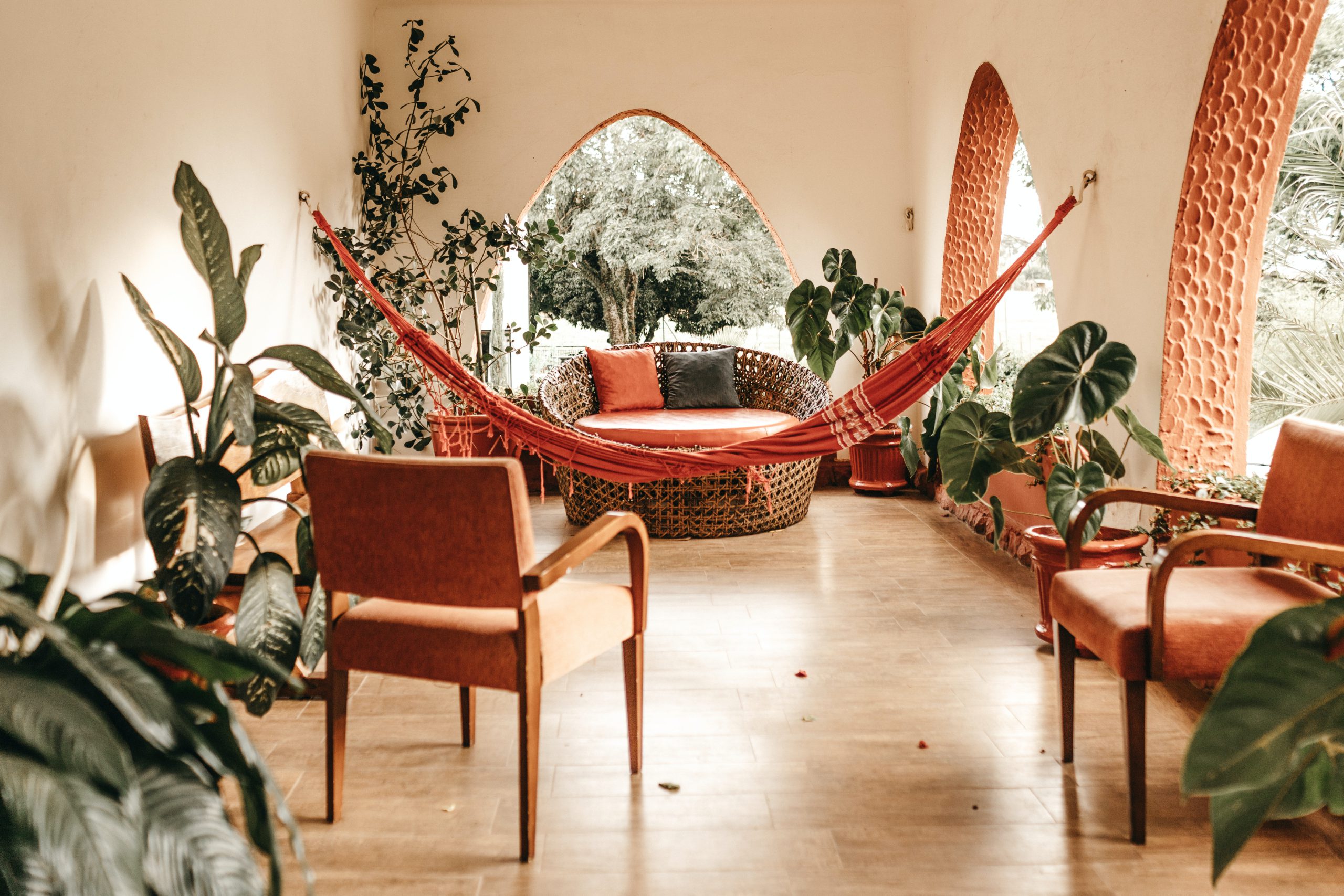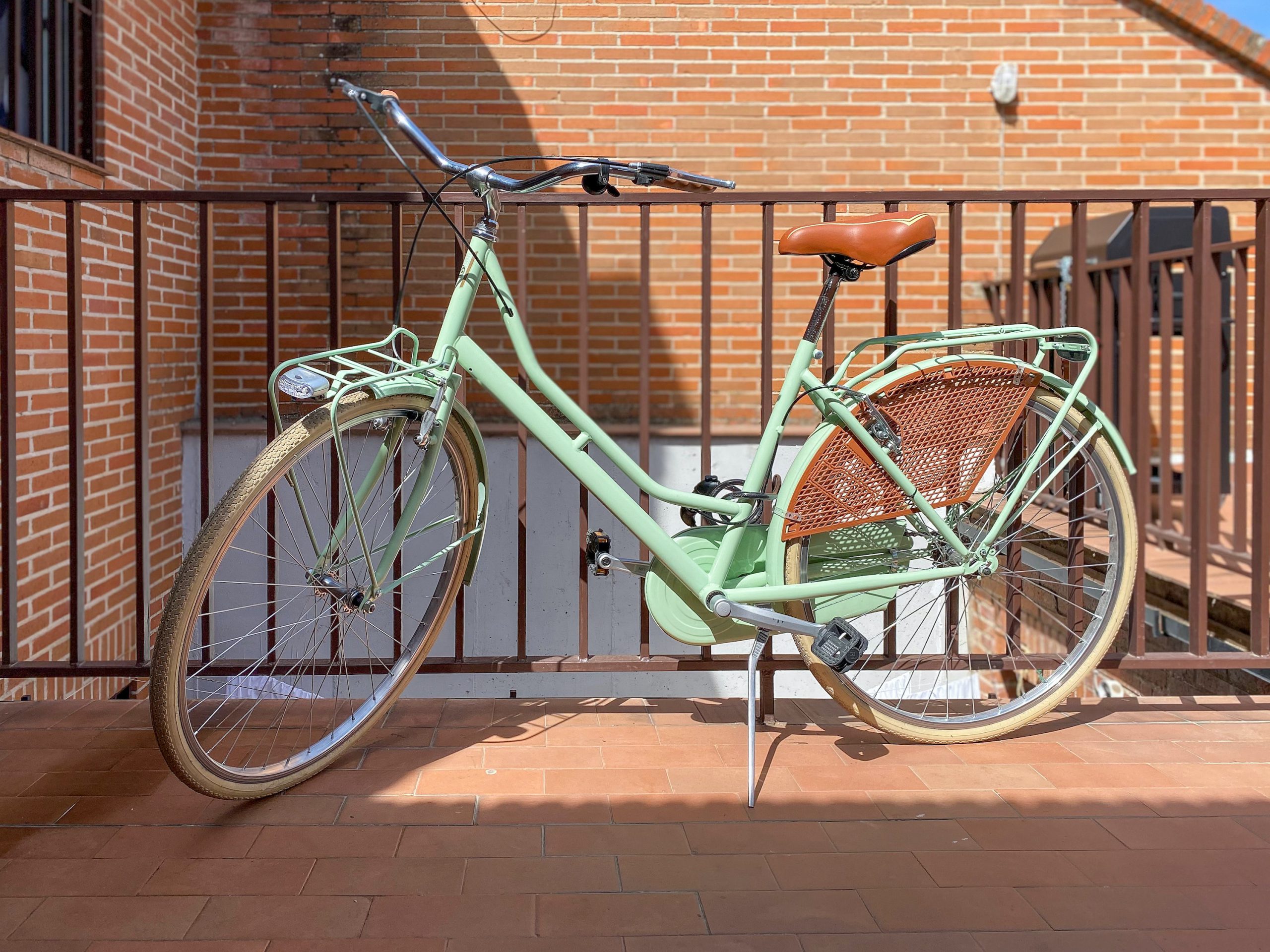The last couple of years have brought with it the need for major changes in many things, especially in the way we travel. A trend that is continuously on the rise is sustainable tourism, as people become more environmentally conscious due to more and more hard to ignore information about climate change. Many vacation goers are now looking to make as little impact during their travels (and their lives) and yearn for eco-friendly accommodations. To meet the demands of the increasingly environmentally-conscious traveler, vacation rental property managers must take necessary steps to go green.
Several key issues are intersecting to bring about a revolution in what travelers are increasingly looking for and what our industry is waking up to provide. Let’s look at some of these factors, what the implications are for your business, and what you can do about it. We include some easy ways to become an eco-friendly vacation rental that both protects the planet and increases the profitability of your business.
What travelers want
Booking.com released its predictions for travel for 2021. One of the trends they call ‘Impact Awakening’ in their survey reveals that:
- 44% of US travellers want to travel more sustainably in the future.
- We should expect to see a more eco-conscious mindset in 2022 and beyond.
- COVID-19 has increased travellers’ awareness about their impact on the environment and local communities.
- Almost two-thirds (63%) expect the travel industry to offer more sustainable travel options.
- 46% of travellers believe in the importance of reducing waste and recycling their plastic.
This survey is noteworthy because it is not a one-off. Booking.com has been conducting these surveys for five years, and the data has consistently shown growth in consumer appetite for sustainable travel.
Sustainability and Profitability are not mutually exclusive
Sustainability and vacation rental profitability go hand in hand. While yes, the main motive for going green is to fight climate change, business owners should also be aware that making these changes will cut down on energy costs and bring in more bookings. It’s a 3 way win: a win for the climate, a win for your business, and a win for your guest.
Remember to take advantage of the power of social media. Market your green rental and attract the right crowd that cares.

Where is your Carbon Neutrality Plan?
Hardly a day goes by without a government, state, city or business laying out their plans to be carbon net-zero – essentially balancing carbon dioxide (CO2) emissions through elimination or offsetting. The trend is catching on in the travel industry. For example, these 50 travel companies have bold initiatives to cut their carbon footprint. And Intrepid is the first tour operator to submit science-based carbon reduction targets.
Airlines are also charting a path to zero carbon flying. Airlines know they have to be part of the solution to climate change, and they are under increasing pressure, regulation, and legislation. Norway has mandated that a percentage of aviation fuel be sustainable this year, growing to 30% by 2030. It wants all short-haul flights to be 100 percent electric by 2040. Canada implemented a carbon tax of 30 Canadian dollars per metric ton of CO2 based on the amount of leaded fuel for domestic travel.
Eventually, we’re bound to see the hotel chains make similar moves to connect with the eco-conscious travelers. It’s not a leap to assume sustainability will trickle down to vacation rental businesses, given how most trends that started in hotel chains make their way to vacation rentals (i.e., upsells, guest experiences).
We won’t go into detail in this article, but we have a whole article about the steps you can take towards going carbon neutral. Click here to read it.
Get your Eco certification
There are a growing number of certification schemes to help hosts assess their green efforts and promote them. A few of the popular ones include Green Pearls, Green Key & Green Tourism. These certifications are very useful in helping a host score their progression to becoming more environmentally friendly. They also give guidance and support in taking the next steps. Of course, they also allow a host to brand a property as eco-friendly and attract those travelers looking for a green getaway.
To help popularize sustainability in the industry, Travalyst is developing sustainability frameworks across the travel and tourism industry. The first three frameworks are accommodation, aviation, and experiences. These frameworks are intended to be the foundation of a scoring system across our industry to help guide travelers when booking a trip. Booking.com intended to introduce this framework on its platform. COVID-19 understandably delayed the rollout, but once Booking.com implements it, we will surely see other listing sites and OTAs follow.
Eco OTAs are becoming more and more popular
Eco OTAs are springing up to meet the increasing demand and changing consumer behavior towards sustainable vacations. Two of the major players on this front are:
- Responsible Travel: They have been running for 20 years, helping clients plan and book a sustainable holiday. They offer a hands-on approach to connecting guests with hosts.
- Ecobnb: They have adopted the lean self-search look and feel found on major listing sites like Airbnb and Vrbo. Ecobnb is now the leading eco OTA in Europe.
Whichever model you prefer, there are so many businesses springing up to showcase green places to stay. By adopting a sustainable approach, you can use your green credentials as marketing material – helping you reach a new pool of potential guests.
With media comes more exposure
Each week there is something in the press talking about what the tourist can do in choosing a greener holiday. For example, this piece defines responsible tourism for the traveler. Flight planning is essential, but so is the community in which you will be staying. This article breaks down some of the components of being a sustainable traveler, from location to accommodation.
More and more consumers read this type of media every day. Guests are starting to understand that there are greener options for their holiday. Not to mention that millennials – a generation known for eco-consciousness – have become one of the largest traveler demographics.
Implications for a host or property manager
All of the above, plus other factors, are changing the short-term rental industry landscape. As travelers connect the dots between their travel and the impact on the climate, they will expect more from hosts to make their stay eco-friendly. They are aware that they have choices and a role that they can play.
Surveys reflect this change of mentality, and businesses respond by taking green steps and then using the certification systems and green OTAs to capitalize on the market.
This is a trend that is only going in one direction. So what should you do to get on board?
The biggest thing you can do is commit to being a part of the solution and take simple green steps to adapt your business. Make a move before your competitors do. Most importantly, be sincere about it – your customers will see through any green-washing.

12 Easy Steps to Becoming an Eco-Friendly Vacation Rental
When it comes to taking action, there are a few modifications to your operations that can help make your processes eco-friendly:
- Switch to green energy
- Switch to renewable energy
- Invest in Smart Home Technology
- Use energy-efficient appliances
- Move away from single-use plastic
- Plant trees
- Offer recycling options for guests
- Provide sustainable transport options
- Buy local
- Stock up with other eco-friendly products
- Get listed with an Eco OTA
- Get environmental certification
Let’s go through these, one by one.
-
Convert to a green energy tariff
Most of us rarely review our power supplier or our tariff with that company. Historically most energy comes from fossil fuels. But you’d be surprised to find out that you sometimes have a choice. Some companies allow you to switch to a green tariff. Switching is easy, sometimes cheaper and makes your business more environmentally sustainable. The environmental benefits of using renewable energy include:
– Generating energy that produces no greenhouse gas emissions from fossil fuels and reduces air pollution.
– Diversifying energy supply and reducing dependence on fossil fuels.
Check your energy bill and see what it says about the energy-creation method. There may be a breakdown explaining the mix of resources used (i.e., coal, gas, nuclear, hydro, wind, solar etc.) Some suppliers don’t provide that breakdown on a bill. In that case, their websites will likely list the information you need.
If you are not on a fully green tariff, contact your supplier and ask about a renewable energy one. They are familiar with these questions and should be able to explain your options.
If they don’t have an effective green tariff, look for an alternative supplier in your region. In the majority of places, there is competition, and other suppliers want your business. Search online for ‘green energy’, adding your city, state, or country to find suitable suppliers or check out organizations that make comparisons for you.
Don’t be put off by warnings of the difficulty of changing suppliers. Carbon-emitting energy suppliers rely on inertia to keep customers from switching. But that same inertia allows suppliers to be unresponsive to changing market forces.
This article explains the different levels of green tariffs (some are better than others) and why choosing one sends a powerful message to your clients’ energy industry.
-
Switch to renewable energy
Reduce your footprint and save money on your energy bill by switching to solar energy. By installing solar panels in your home, you can generate electricity while greatly reducing the harmful effect on the environment. If installing solar panels on the roof is too expensive for you right now, don’t worry. Look into home wind turbines, geothermal energy, energy efficiency, and solar panels for small applications such as tiki lights, driveway lights and so much more.
-
Invest in Smart Home Technology
Investing in smart-home technology is another way to move towards becoming a green vacation home. By putting money into energy-saving lighting, appliances, and systems, you can reduce energy use throughout your home and as a result, you reduce your energy bill. Some of the ways to do this are through:
- Smart cooling and heating systems: Instead of leaving your heating and cooling adjustments to your guests, you manage your smart thermostats from wherever you are. Program your systems so that guests arrive at a crispy warm home in the winter, and a slightly cool home in the heat of summer. Try to analyze energy use patterns and optimize consistently.
- Smart locks: Not only is this a smart way to protect your home, but it also helps the carbon footprint by saving on gas emissions made by you having to drive back and forth to check-in and check-out your guests.
As reported by the EPA, “Greenhouse gas emissions from transportation account for about 29% of total U.S. greenhouse gas emissions, making it the largest contributor of U.S. GHG emissions”. A whopping 58% of these emissions come from light-duty vehicles, meaning that even the smallest adjustments (like using smart locks for self-check-in) are helpful for the environment.
- Smart lighting: Smart lighting detects when someone is in the room and needs lights, and it then adjusts the lighting appropriately. This is a huge saving on energy and your energy bill. Many guests aren’t energy-conscious and tend to leave lights on even when they’re not in the room. And then there are others who just forget. Smart lighting makes a huge difference here, by automatically turning the lights off when no one is in the room.
Smart light bulbs have many perks, including a positive impact on your wallet as well as the environment. According toENERGY STAR, their certified smart bulbs “use 90% less energy than traditional incandescent light bulbs and have 15 times the life expectancy than that of incandescent bulbs.”
-
Use energy-efficient appliances
A smart home isn’t completely a smart home without smart appliances. You can use LED light bulbs, install a solar power system or solar panels, and replace old appliances with more efficient models to reduce energy consumption (think refrigerators, air conditioners, heaters, washing machines, and dishwashers). Energy Star certified appliances are known for using less energy. Some of these appliances may need special instructions for renters, so make sure to leave notes as needed. You can use a digital guidebook to convey these detailed instructions.
-
Move away from single-use plastic
Plastic pollution is perhaps the poster child of environmental sustainability. Increasingly, travelers understand the impact of plastic and are unforgiving when they see its profligate use. Plastic is ubiquitous, but that does not mean that you can’t be highly selective about when and why you use it.
Bottled water is a big one. Instead of offering bottles at check-in, have reusable bottles on hand with either filter jugs, fitted filters, or sparkling machines. To increase repeat bookings and listing site independence, you can also offer a branded long-life water bottle as a gift to your guests. If the coffee culture is big in your area, consider a branded cup as a gift for your guest. Half a trillion cups are thrown away each year. Your gift will be great for the environment and your marketing efforts!
Many hotels are transforming how they save, showing more and more the importance of not having to constantly replace small toiletries. In the essence of doing so, they’re also becoming environmentally friendly. Here are some examples of how:
- They’re using refillable containers in the bathrooms for their shampoo, soap, and conditioner. You can too.
- Use recyclable toilet paper and paper towels. Take it a step further by using biodegradable/compostable trash bags.
- Have recyclable shopping bags on hand for your guests.
- Find cleaning product suppliers that sell in bulk, so you can use refillable dispensers. Even better if the product comes dehydrated, therefore reducing the water transport carbon footprint. Remember to find eco-friendly cleaning products that do not use chemicals toxic to the environment.
These are just a few examples. The longer your guests are on your property, they’ll eventually realize the statement you’re making and will come to appreciate your sustainable methods. It may even encourage them to recycle and adopt an eco lifestyle, further impacting your carbon footprint. Plus, the likelihood they will book with you again increases.
PS: You’d be surprised to find out that most plastics are collected for recycling but still end up in a landfill. So, where you use plastic, find out which types are recycled in your area. Commit to only that type and recycle it. This article explains many of the issues around plastic and suggests changes that you could incorporate into your business.

-
Plant trees
Planting trees is one of the most straightforward actions you can take, one of the most beautiful and one with an incredible benefit for the planet.
Trees are superb at sucking carbon out of the atmosphere and storing it. They are the lungs of the planet and are essential for maintaining the healthy air that we breathe. Surrounding a property with trees and shrubs also cuts down on cooling costs in the summer as nature efficiently blocks the sun from heating up a home.
‘The best time to plant a tree was 20 years ago, the second-best time is now’ (Chinese Proverb).
Start a garden
At your home or your business property, plant some trees. There are over 60,000 varieties to choose from. Most importantly, choose a species that is best suited to your local environment, and keep in mind to check for safety in case you have pets that eat literally everything. Ideally, plant quick-growing trees so that they can start their carbon-negation process faster.
You can also grow some crops! They naturally clean the air, replenish the soil, and save you trips to the grocery store. And if your guests know they’re welcome to use what you have toward their home-cooked meals in your beautiful, big kitchen, it will make your rental property that much more impressive. Some easy crops to grow in your organic garden include lettuce, chives, zucchini, blackberries, raspberries, garlic, strawberries, and mint.
Decorate with real plants
If you don’t have a big garden to grow trees and your own crops, then simply decorate your indoors with real plants. Not only are they beautiful to see, they add a dash of nature and greenery to any room. Some are very easy to care for, like snake plants, philodendrons, and cacti plants. Real plants can also help clean your air inside because they produce oxygen that absorbs unwanted and unhealthy toxins.
Aside from green plants, you can decorate with flowers. Sunflowers, jasmine, and daisies are often popular choices. They serve as a beautiful backdrop to any photo and will certainly put a smile on your guests face.

Finance tree planting in your community
If planting trees is not an option, you can also dedicate a portion of your earnings to finance tree planting in your community. This makes for great partnerships with local organizations and could even result in increased marketing exposure.
Alternatively, you can introduce a carbon offset scheme for your guests. While this doesn’t absolve you and your guests of all responsibility, it’s a step in the right direction. Your guests will likely participate and will appreciate your efforts in helping to green their holiday. This article explains the science behind tree planting to combat the climate crisis. Note that you can upsell carbon offsets directly in your Hostfully digital marketplace, making it easy for guests to participate.
-
Offer recycling options for guests
Recycling is one the oldest ways we all know to make the planet a lot greener. So, why not offer your guests opportunities to recycle? Have multiple options for your guests to sort out their waste (bottles, cans, glass, organic food waste, etc). Most people don’t recycle because they don’t know what to do. If you leave instructions, that would encourage them to continue to do it even after leaving your property.
PS: If your property has a yard or a garden, you can consider having a compost pile.
-
Provide sustainable transport options
Who wouldn’t use a scooter or a bike to go a few blocks in the nice summer weather if it was available to them? Consider that as an option for your renters, especially if you live in the beautiful countryside or if you live in close proximity to everything they’ll need. Electric scooters, bikes, and even kayaks for the lake community are all great ways for your guests to get around. For some, it may be new and feel like part of the vacation. But for others, they’ll welcome sustainable options. If you can not provide these, then describe in detail how to use public transportation in the area to get to grocery stores, restaurants and other frequently visited places, so your guest doesn‘t have to rely on an Uber.
PS: To go the extra mile, provide sustainable supplies that guests can take with them on their outings such as recyclable trash bags and reusable water bottles.

-
Buy local
Many big businesses make a point of letting their customers know they only buy from local suppliers, why don’t you? Household items, toiletries, cleaning products, etc. can be things you buy from local suppliers, supporting the local economy. Plus, your carbon footprint will be significantly reduced since you no longer have to travel outside the area to buy your supplies.
-
Other eco-friendly products
Remember to consider not only where you buy from, but the materials you choose when buying eco-friendly products. When it comes to products like towels, linens and bedding, you can consider eco-conscious materials. Many duvets for example are made using goose down, so avoid those at all costs. You’ll find some cool alternatives that do not harm animals or the environment.
- Get listed with an Eco OTA
Many vacationers look to eco OTAs when they’re searching for eco-friendly accommodations to book for their holiday. If your property is listed on some of these sites, you know you’re going to get travelers who care about the environment. There are many choices:
- Ecobnb: You’ll need to meet 10 sustainability criteria to be listed here.
- Green Pearls: Your property will be scored on certain environmental factors.
- Fairbnb: Is committed to ecotourism and ethical travel and donates 50% of its revenue to fund local community projects.
- Brookitgreen: These are for accommodations throughout Europe.
You don’t have to be perfect to be listed with many of these eco OTAs. They will accept properties that are at different points on the green journey. But you do have to be serious and honest about what you have achieved and what you hope to tackle next. There is no point in promising what you cannot deliver – this will only result in low customer satisfaction, a bad review or maybe even delisting.
Remember to also list your green initiatives on all the regular OTAs you use, not just on the eco sites. Guests on Airbnb or Vrbo are just as likely to be eco-conscious and may use those platforms out of habit. Or they may not be aware of sites like Ecobnb.
-
Environmental Accreditation
Contact a reputable accreditation organization that will assess your progress and help you move to the next level. They will take you through an independent certification process. The discerning traveler is looking for evidence that you can prove your new shiny green claims. They will also give you a distinct marketing advantage over your competitors, helping you attract the green-minded consumer.
Remember, they are the experts and can guide you as you plan your next green steps. So lean on them; that is their job. There are many excellent companies ready to help you. One that we recommend is Green Tourism. Another is Sustonica, the only sustainability certification available right now for vacation rentals.
Summary
It’s important to remember that the journey towards environmental sustainability in vacation rentals isn’t about perfection on the first day. Sustainability is a journey and not a destination. What counts are small improvements that compound over time. Equally important is to be public about the steps you take. Your actions will build momentum and others will follow. Write about them in your Hostfully guidebook, on social media, in blogs and on your website. Remember that you are branding yourself in a whole new way to tap into a growing market, while still keeping your existing client base.
Good luck with your environmental journey. We are here to help you because this is important.
This article is an updated version of the one written by Bob Garner. Bob is passionate about the environment and institutes several strategies for environmental living in properties he owns with his husband Ian. Their luxurious properties, Casal Dei Fichi, in Le March, Italy are prime examples of his passion. He seeks opportunities to help other vacation rental owners see the opportunities in achieving environmental sustainability.







